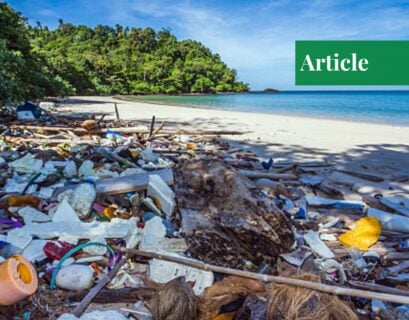Iman Faisal is currently pursuing her bachelor's in peace and conflict studies from National Defense University Islamabad. Her areas of interest are the Middle East, South Asia, Africa, sectarian conflicts, terrorism, and criminology.
Fukushima Nuclear Incident
When a major earthquake hit Japan in 2011, it caused a major tsunami resulting in damaging consequences to the nuclear plant at Fukushima and producing a potentially hazardous nuclear disaster. At least 3 nuclear reactors were disrupted when their cooling systems shut down and fuel rods melted, generating large quantities of radioactive material which settled down in the bottom of the cores.

Around 47,000 people had to evacuate the region surrounding the nuclear facility, with the International Nuclear and Radiological Event Scale rating it as an accident of level 7. It was suspected that the incident might have influenced the food items in the region surrounding the Fukushima plant. The Japanese fishing industry was largely damaged when many countries like the US and the UK imposed a ban on seafood and other edible products in Japan due to the fear of contamination.
The Damage Control
Water was dropped through helicopters and water cannons loaded on trucks to cool down the nuclear site. The workers at the facility pacified the cores by filling them with seawater and boric acid. The water used for cooling was stored in the tanks around the reactors. Later, in 2013, it was suspected that radioactive water was being leaked into the surrounding landscape of Fukushima.
Initially, it was denied, but then Tokyo Electric Power Company (TEPCO) admitted that the leakage had been taking place. They were unable to detect the actual origin of the incident which led to tonnes of water seeping underground and into the sea as well.
How was the Water Treated?
This radioactive water was treated and stored in the tanks near the nuclear facility. These tanks had advanced liquid processing systems that treated water every day, extracting tonnes of radioactive elements. The process, however, did not remove tritium and carbon-14 from it, so seawater was mixed with it to reduce the effects of radionuclides.
What is the Fukushima Water Discharge Plan?
Since Japan does not have sufficient capacity to accommodate the contaminated groundwater and rainwater, it has decided to release it into the Pacific Ocean. It invited the IAEA to monitor and review the Fukushima water discharge operation. IAEA reviewed Japan’s plan and management system for the disposal of treated nuclear waste for two years, announcing satisfaction with the procedure and propagating that it will have “negligible radiological impact on the people and environment”.
Reservations
Tokyo’s plan to discharge radioactive water into the Pacific Ocean has received the international community’s green signal, but the neighboring countries seem to be disturbed. South Korea, China, and the Pacific Island nations have strongly opposed this announcement by Japan. Pacific Island Nations have maintained that the region is still witnessing the aftereffects of nuclear experiments by the US, UK, and France.

Pacific Islands are largely dependent on fisheries and marine products, in terms of food and economy. Hence, if the water receives large accumulations of radiation, it may have severe consequences for the livelihood of citizens of ocean states.
Beijing has called ASEAN states to strongly oppose Japan’s proposal. It accused Japan of treating the Pacific Ocean as a “private skewer”. Demanding the immediate suspension of the water discharge operation, China has declared the review of the IAEA endorsing “Japan’s plan” as unacceptable.
China was the biggest importer of Japanese seafood, but after this controversy, the Japanese seafood market has received a significant blow. Many Japanese restaurant owners in Beijing have lost customers as well as imported supplies because of the restrictions imposed on certain products.
In addition to this, South Korea, which is one of its closest neighbors, objected to the contamination of the Pacific Ocean. It is of the view that releasing radioactive material in pure waters will not only impact nature but damage the marine ecosystem as well. The legislators of South Korea have protested in the parliament and accused the IAEA of colluding with Japan on this matter. It also proposed to impose a ban on Japanese food products. Further, it has proposed the government take the case in front of an international tribunal for the law of seas.
The debate over Japanese radioactive water dumping has ignited a spate of demonstrations all over South Korea. Activists are chanting slogans like “Keep it Inland” and “Protect the Pacific Ocean” to raise their concerns over the issue at hand.
Conclusion
The treated waste disposal project of Japan seems to be widely objectionable, and while the IAEA and the UN watchdog may have approved the proposed systems for treating the nuclear dump, the neighboring states are very skeptical about it. They argue that this issue will not only affect the daily lives of humans but will also have devastating consequences on sea life.
If you want to submit your articles, research papers, and book reviews, please check the Submissions page.
The views and opinions expressed in this article/paper are the author’s own and do not necessarily reflect the editorial position of Paradigm Shift.



















